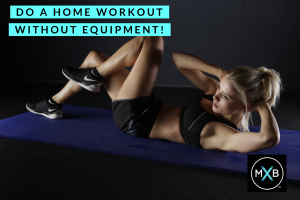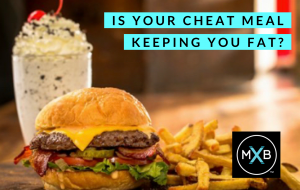
These days since going to the gym is not an option, more and more people are trying to do home workouts, which has caused a lot of home workout equipment to go out of stock. How can you have a great workout at home without any equipment?
You might be surprised to read that along with toilet paper, it’s your basic home workout equipment that has quickly sold out online. Had I thought this would happen, I would’ve asked my clients to make sure they got a few things before they all got bought out. Lucky for them, I have an arsenal of exercises that are very effective with no equipment necessary. There are quite a few ways to do a home workout without needing to purchase anything! Here are some fantastic home workout options without spending a dime:
Calisthenics is a type of exercise consisting of a variety of simple movements usually performed without weights or any other gym equipment. These exercises are intended to increase strength and flexibility using your own body weight for resistance. My method when training my clients through calisthenics is to perform the exercises in a sequential and systematic order. I always start with larger muscle groups first and then work up from there. For this reason I like to start with squats, as the legs are not only the foundation for the entire body, but also consist of the largest muscle groups and therefore burn the most calories. From squats, I move them into lunges in order to target train the quads and glutes. Finishing off the lower half of the body, I move them into the floor bridge, which focuses on the calves and hamstrings. To transition my clients from the lower body into the upper I like to have them do planks, which focuses on the core, aka the trunk of the body consisting of the connective muscles between the upper and lower body. The perfect upper body weight-free exercise is the push up, which mainly focuses on the chest, triceps and shoulders. From pushups I have them do dips, which can be done on any flat surface that is no higher than the bottom part of your rump. And lastly, bicycle crunches to target the abs.
Cardio short for cardiovascular exercise, is any exercise that raises your heart rate. To clarify, while “aerobic” and “cardio” are usually used interchangeably, “aerobic” refers to using oxygen when exercising, and cardio refers to your heart pumping. Basically when you do a cardio workout, you are working aerobically.
People often fail to realize the heart is also a muscle and therefore needs to be worked out just as much as any other muscle in the body in order to stay strong and healthy. Some examples of cardio are: jumping, running, brisk walking, even intense cleaning! Because none of those activities require any equipment, cardio is a great and easy way to do a home workout. My personal favorite easy cardio workout is the age-old, kid friendly hopping we all performed in our elementary school P.E. classes—jumping jacks. They may seem silly, but they incorporate jumping which you might be surprised to know burns more calories per minute than running! Yep, it’s true! Jumping not only has less impact on your joints than running, it works more muscle groups, which helps burn more calories during a shorter period of time.
However, the added benefit of jumping jacks is that you are also engaging your arms, which not only helps burn even more calories, it could also help with mobility and strengthening of the shoulders. You might be thinking, “how can I do 30+ minutes of straight jumping jacks to get a good workout?” Well, contrary to popular belief, for optimal calorie burn and heart strengthening, cardio is best done in intervals of explosive spurts. What does this mean? It means that doing 25-50 jumping jacks, resting for 30-60 seconds, then doing another 25-50 reps and repeating this pattern for a period of 10 minutes, will burn as many or more calories as running for 30 minutes straight. This is because the metabolic expenditure of jumping is higher and provides more cardio-respiratory training than running per unit of time or distance. To put it simply, it takes more energy to jump than it does to run and the more energy you need for the activity, the more calories you burn during such activity. Therefore, short spurts of cardio that involve jumping are actually more efficient than longer periods of a steady state activity.
If you’re looking for an even more intense home workout, you could try making your own home workout equipment. Got some milk jugs around? Well, before you throw your used jugs in the recycling bin, try filling them with tap water for a homemade dumbbell. FYI, 1 gallon of water is equal to about 8.35 pounds. This means with two milk jugs filled with water you could add a plethora of exercises to your home workout routine! I personally love this homemade piece of equipment for a few reasons:
– You can find milk/water jugs pretty much anywhere. Just make sure you get the screw on top instead of the snap on, to avoid spilling.
– Water to fill them is easily accessible.
– The handles make for a perfect dumbbell substitute.
Adding this simple homemade weight to any exercise will not only help make the exercise all the more challenging, it will help build and/or maintain muscle which helps burn more calories during your workout and at rest!
As you can see, there are plenty of at home workout options during this time of social distancing that will help you either get in shape or stay in shape. Don’t let the “out of stock” home equipment be an excuse to get lazy! Be proactive by making your health and fitness a priority so that you can stay healthy.
Disclaimer
Although my blog topics can be very beneficial to your overall health, they are not intended for the purpose of providing medical advice. All content is for informational purposes only and is not intended to serve as a substitute for the consultation, diagnosis, and/or medical treatment of a qualified physician or healthcare provider. Every effort is made to ensure the accuracy of published information on or through my website, blog, e-mails, programs and services. However, the information may inadvertently contain inaccuracies or typographical errors. Every effort has been made to present you with the most accurate, up-to-date information, but because the nature of diet, fitness and health research is constantly evolving, we cannot be held responsible for the accuracy of our content.




Are you confused by all the conflicting diet and fitness information? Do you feel overwhelmed by what you should be doing to have optimal health? Then you’ve come to the right place!
Follow me and let me help you make sense of all of this!
